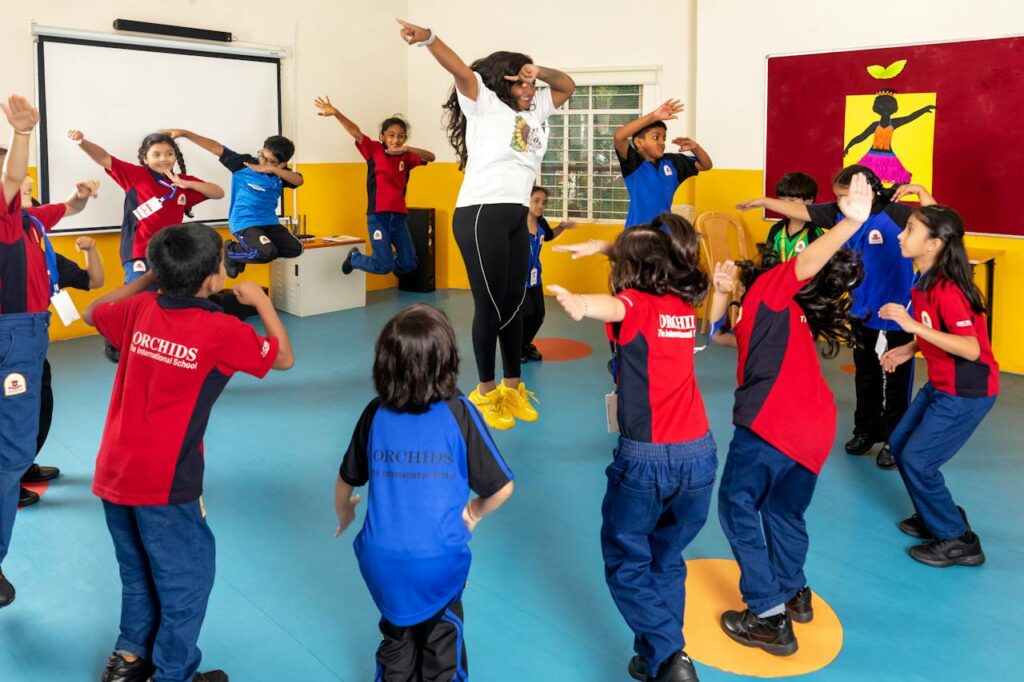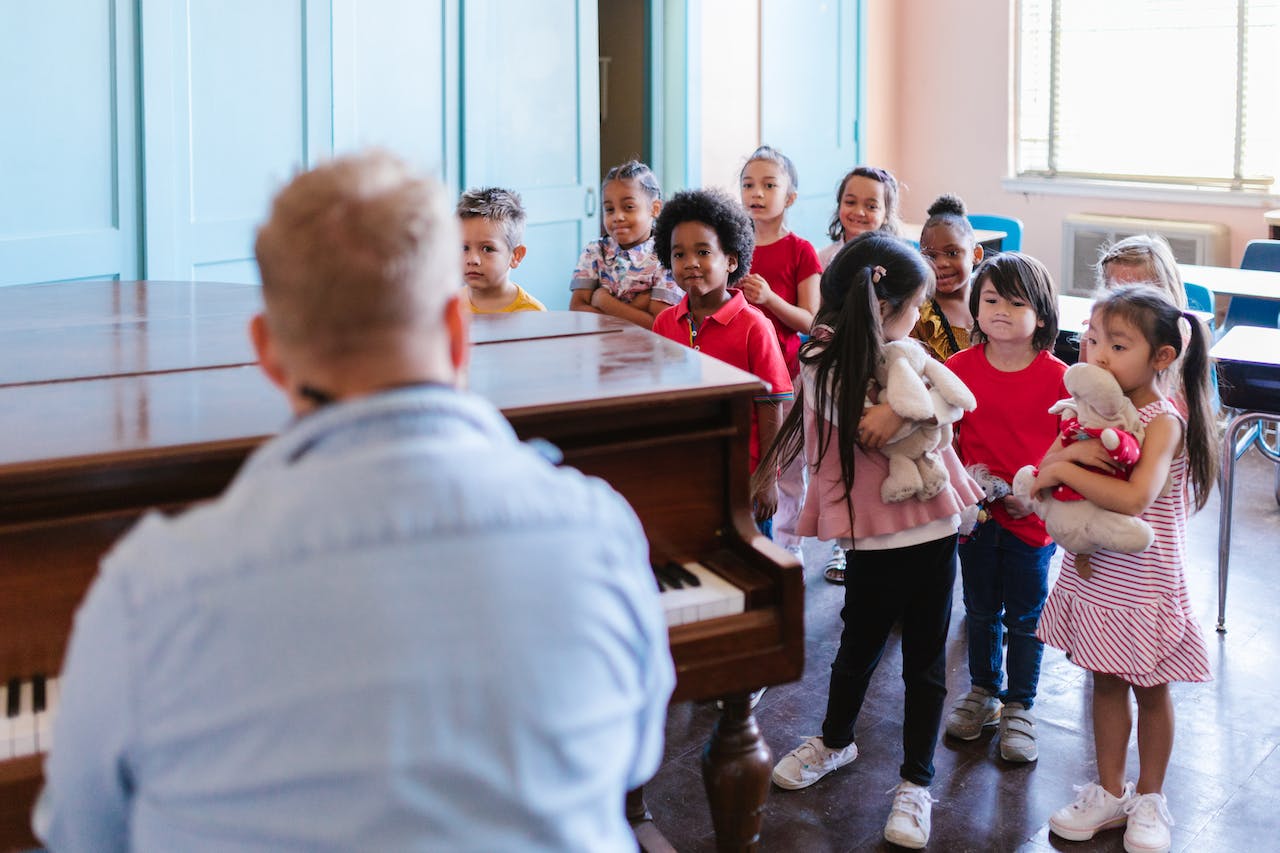In my previous blogs, Include Math Talk as Part of Your EC Classroom Routine, and Nurturing Sensory-Motor Skills in the Infant and Toddler Classes, I discuss the significance of sound as an essential learning tool for young children. Today’s blog is a deeper dive into the value of including sound, music, and movement in your daily curriculum.
Babies respond to music and sound in the womb as early as five months. The mother’s heartbeat in the womb is their very first rhythm. Young children do not separate music, and movement, and dance. Adding movement to sounds involves more senses and improves their retention/memory and academic potential. Teaching children movements related to time (moving fast vs. slow), direction (forward, backward, side to side), and spatial awareness (e.g., crossing their arm from the right side of the body to the left or tapping their heel to the ground), develops their perceptual motor skills that develop brain functions necessary to plan and make decisions from simple to more complex. Children not developing these skills in their early years may gravitate away from active sports, games, and dance towards less threatening sedentary hobbies (Lindsay & Byington, 2020).

#MusicAndMovement #EarlyEducation
Music and movement in your classroom add joy and creativity and build connections to the learning experience. Music and movement provide opportunities for you, teachers, to express yourself. Teachers can easily tailor activities to suit different themes, learning objectives, or student interests, keeping the classroom dynamic and engaging. Below are tips and several videos. The videos are for YOU, the teachers, to learn the songs and movements rather than for the children to view. Music and movement should be live and interactive in your classroom.
Tips and Videos:
Transitions:
Sing your transitions. Create the songs yourself. The children will recall the transition steps more easily when they are set to a rhythm and tune. Music and Transitions! Singing and singing games to move to the same place together, quick songs in between. Make up the words and the directions you are giving into a song.
Body Percussion:
Body percussion combines movement and sound. We use our body parts to make percussive sounds and rhythms. Here are some videos illustrating body percussions with simple songs you can teach your students.
Kindergarten Body Percussion 1
Water Melon Water Melon Yummy
Include Percussion Instruments:
Percussion Instruments are a great addition to any song, story, or rhyme. The children are moving their instruments to the beat.
Rum Tum Tum, We Know How to Drum
How to make simple percussion instruments:
Small containers filled with items and sealed well. Different items make different sounds. Use Bean, sand, buttons, tiny stones, bottle tops. Well sealed in small containers, they have different sounds.
Small Bells strung on a pipe cleaner or string.
Banging Pots with wooden spoons.
Simple Songs for Perceptual Motor Skills:
Head Shoulders Knees and Toes
Hokey Pokey
Touch Your Head
One Little Finger
Music and movement into early childhood education are crucial for holistic development, including cognitive, emotional, social, and physical domains. These activities enrich children’s lives and lay the foundation for lifelong learning and well-being.
Let’s create vibrant learning environments where music and movement enrich the lives of young learners. Reach out today to explore how we can work together to enhance early childhood education!
Elevate your understanding of early childhood education and child development with my engaging preschool education workshops tailored for both teachers and parents. These workshops provide valuable insights, practical strategies, and effective tools to enhance your role in nurturing young minds. Whether you’re an educator or a parent, these sessions aim to empower you with the knowledge and skills essential for fostering a positive learning environment. Dive deeper into the world of preschool education and child development by exploring my workshop offerings. For more valuable content and updates, follow me on Instagram and connect with me on LinkedIn. #EarlyYearsConsult
#EarlyChildhoodEducation #ChildDevelopment #PreschoolWorkshops #EducatorServices #ParentingTips #LearnAndGrow

